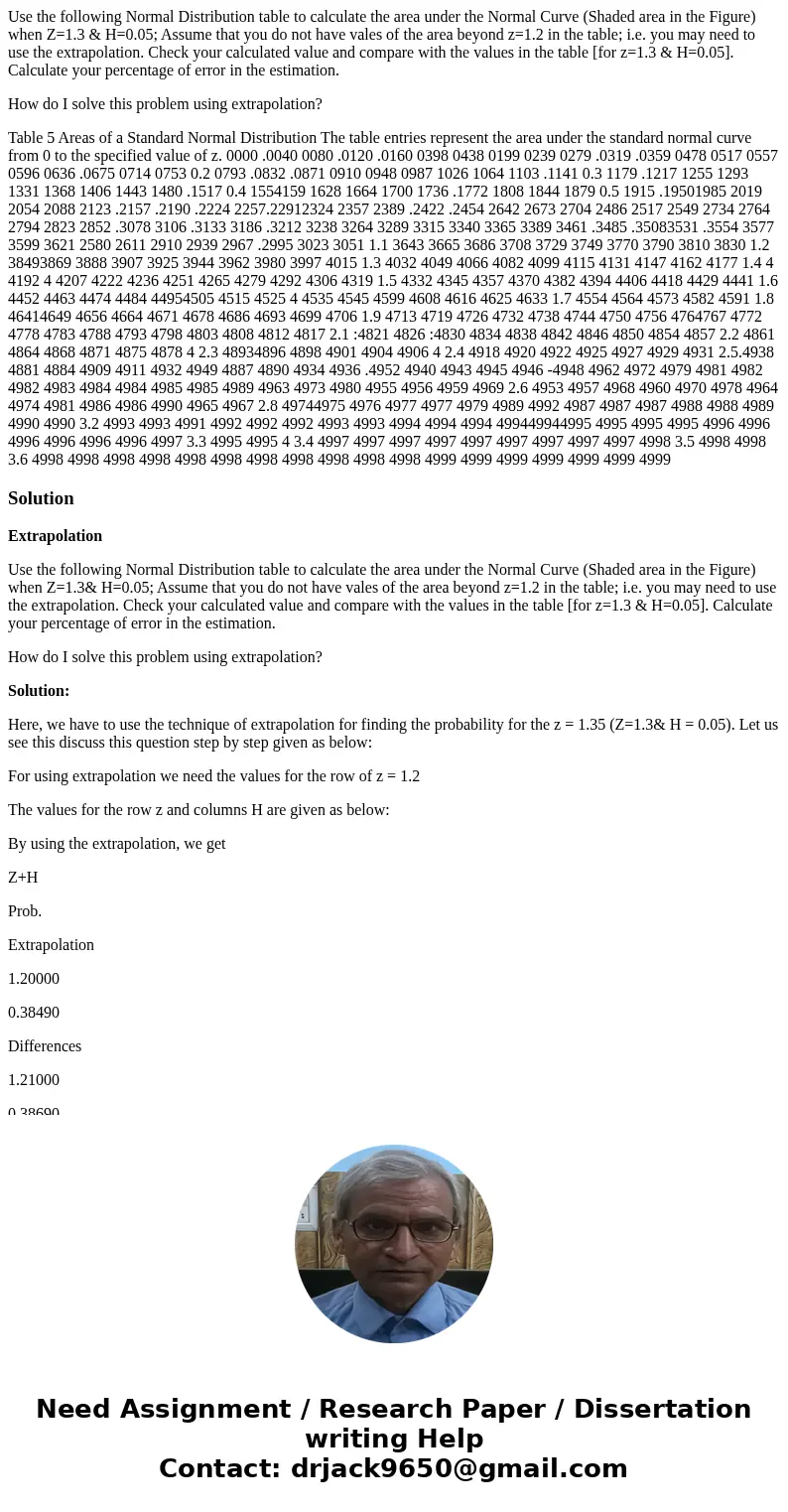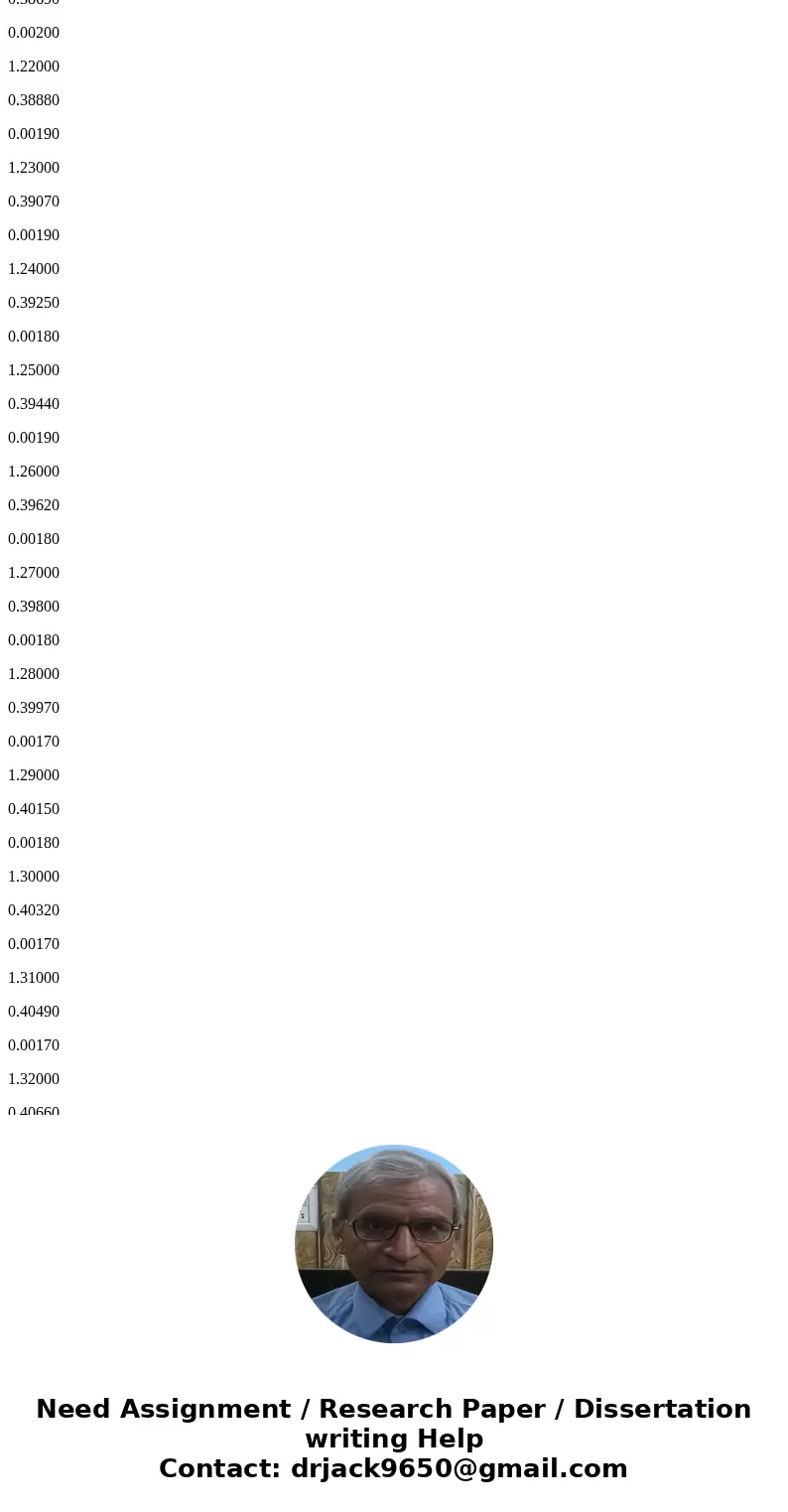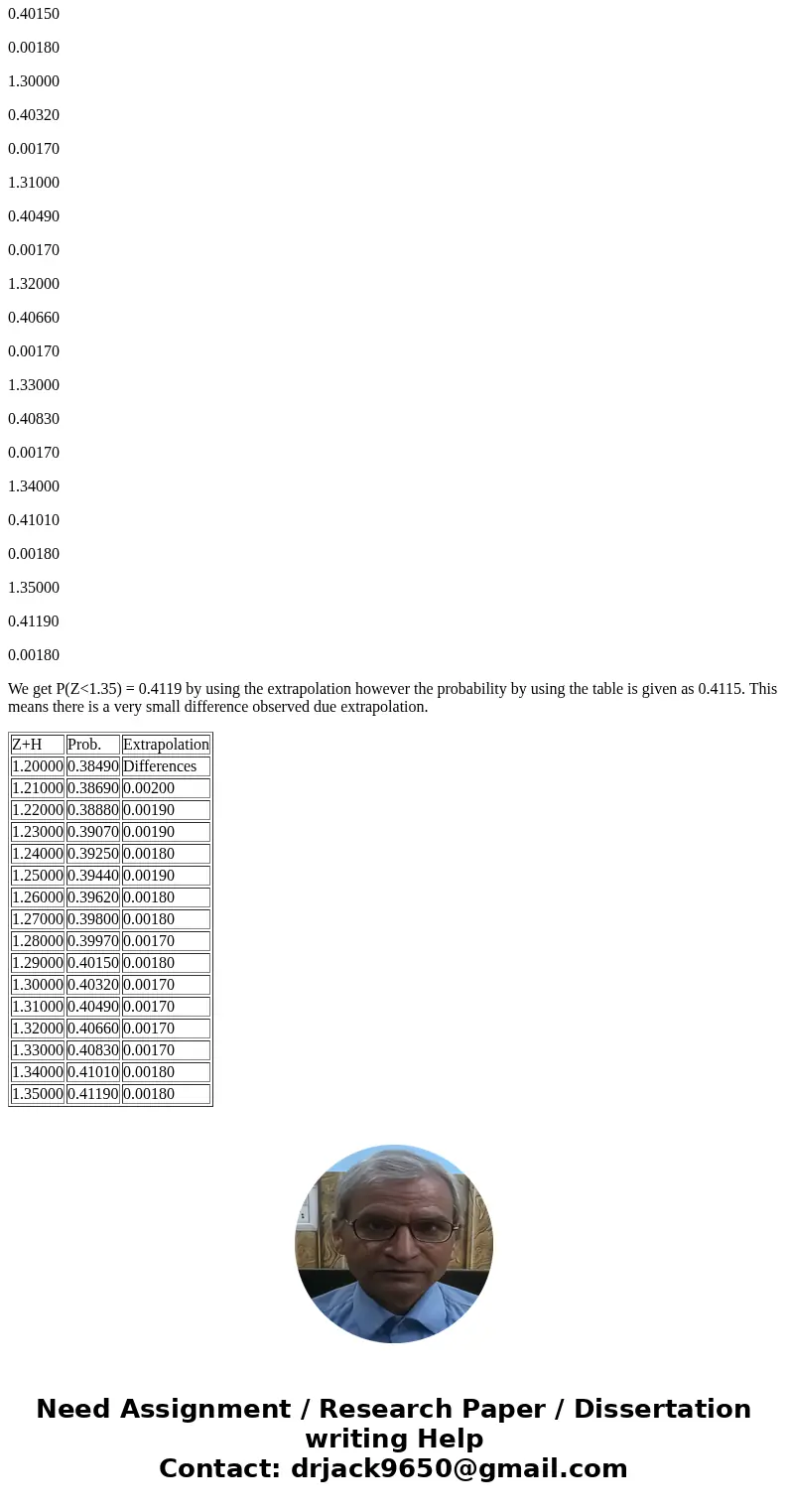Use the following Normal Distribution table to calculate the
Use the following Normal Distribution table to calculate the area under the Normal Curve (Shaded area in the Figure) when Z=1.3 & H=0.05; Assume that you do not have vales of the area beyond z=1.2 in the table; i.e. you may need to use the extrapolation. Check your calculated value and compare with the values in the table [for z=1.3 & H=0.05]. Calculate your percentage of error in the estimation.
How do I solve this problem using extrapolation?
Table 5 Areas of a Standard Normal Distribution The table entries represent the area under the standard normal curve from 0 to the specified value of z. 0000 .0040 0080 .0120 .0160 0398 0438 0199 0239 0279 .0319 .0359 0478 0517 0557 0596 0636 .0675 0714 0753 0.2 0793 .0832 .0871 0910 0948 0987 1026 1064 1103 .1141 0.3 1179 .1217 1255 1293 1331 1368 1406 1443 1480 .1517 0.4 1554159 1628 1664 1700 1736 .1772 1808 1844 1879 0.5 1915 .19501985 2019 2054 2088 2123 .2157 .2190 .2224 2257.22912324 2357 2389 .2422 .2454 2642 2673 2704 2486 2517 2549 2734 2764 2794 2823 2852 .3078 3106 .3133 3186 .3212 3238 3264 3289 3315 3340 3365 3389 3461 .3485 .35083531 .3554 3577 3599 3621 2580 2611 2910 2939 2967 .2995 3023 3051 1.1 3643 3665 3686 3708 3729 3749 3770 3790 3810 3830 1.2 38493869 3888 3907 3925 3944 3962 3980 3997 4015 1.3 4032 4049 4066 4082 4099 4115 4131 4147 4162 4177 1.4 4 4192 4 4207 4222 4236 4251 4265 4279 4292 4306 4319 1.5 4332 4345 4357 4370 4382 4394 4406 4418 4429 4441 1.6 4452 4463 4474 4484 44954505 4515 4525 4 4535 4545 4599 4608 4616 4625 4633 1.7 4554 4564 4573 4582 4591 1.8 46414649 4656 4664 4671 4678 4686 4693 4699 4706 1.9 4713 4719 4726 4732 4738 4744 4750 4756 4764767 4772 4778 4783 4788 4793 4798 4803 4808 4812 4817 2.1 :4821 4826 :4830 4834 4838 4842 4846 4850 4854 4857 2.2 4861 4864 4868 4871 4875 4878 4 2.3 48934896 4898 4901 4904 4906 4 2.4 4918 4920 4922 4925 4927 4929 4931 2.5.4938 4881 4884 4909 4911 4932 4949 4887 4890 4934 4936 .4952 4940 4943 4945 4946 -4948 4962 4972 4979 4981 4982 4982 4983 4984 4984 4985 4985 4989 4963 4973 4980 4955 4956 4959 4969 2.6 4953 4957 4968 4960 4970 4978 4964 4974 4981 4986 4986 4990 4965 4967 2.8 49744975 4976 4977 4977 4979 4989 4992 4987 4987 4987 4988 4988 4989 4990 4990 3.2 4993 4993 4991 4992 4992 4992 4993 4993 4994 4994 4994 499449944995 4995 4995 4995 4996 4996 4996 4996 4996 4996 4997 3.3 4995 4995 4 3.4 4997 4997 4997 4997 4997 4997 4997 4997 4997 4998 3.5 4998 4998 3.6 4998 4998 4998 4998 4998 4998 4998 4998 4998 4998 4998 4999 4999 4999 4999 4999 4999 4999Solution
Extrapolation
Use the following Normal Distribution table to calculate the area under the Normal Curve (Shaded area in the Figure) when Z=1.3& H=0.05; Assume that you do not have vales of the area beyond z=1.2 in the table; i.e. you may need to use the extrapolation. Check your calculated value and compare with the values in the table [for z=1.3 & H=0.05]. Calculate your percentage of error in the estimation.
How do I solve this problem using extrapolation?
Solution:
Here, we have to use the technique of extrapolation for finding the probability for the z = 1.35 (Z=1.3& H = 0.05). Let us see this discuss this question step by step given as below:
For using extrapolation we need the values for the row of z = 1.2
The values for the row z and columns H are given as below:
By using the extrapolation, we get
Z+H
Prob.
Extrapolation
1.20000
0.38490
Differences
1.21000
0.38690
0.00200
1.22000
0.38880
0.00190
1.23000
0.39070
0.00190
1.24000
0.39250
0.00180
1.25000
0.39440
0.00190
1.26000
0.39620
0.00180
1.27000
0.39800
0.00180
1.28000
0.39970
0.00170
1.29000
0.40150
0.00180
1.30000
0.40320
0.00170
1.31000
0.40490
0.00170
1.32000
0.40660
0.00170
1.33000
0.40830
0.00170
1.34000
0.41010
0.00180
1.35000
0.41190
0.00180
We get P(Z<1.35) = 0.4119 by using the extrapolation however the probability by using the table is given as 0.4115. This means there is a very small difference observed due extrapolation.
| Z+H | Prob. | Extrapolation |
| 1.20000 | 0.38490 | Differences |
| 1.21000 | 0.38690 | 0.00200 |
| 1.22000 | 0.38880 | 0.00190 |
| 1.23000 | 0.39070 | 0.00190 |
| 1.24000 | 0.39250 | 0.00180 |
| 1.25000 | 0.39440 | 0.00190 |
| 1.26000 | 0.39620 | 0.00180 |
| 1.27000 | 0.39800 | 0.00180 |
| 1.28000 | 0.39970 | 0.00170 |
| 1.29000 | 0.40150 | 0.00180 |
| 1.30000 | 0.40320 | 0.00170 |
| 1.31000 | 0.40490 | 0.00170 |
| 1.32000 | 0.40660 | 0.00170 |
| 1.33000 | 0.40830 | 0.00170 |
| 1.34000 | 0.41010 | 0.00180 |
| 1.35000 | 0.41190 | 0.00180 |



 Homework Sourse
Homework Sourse